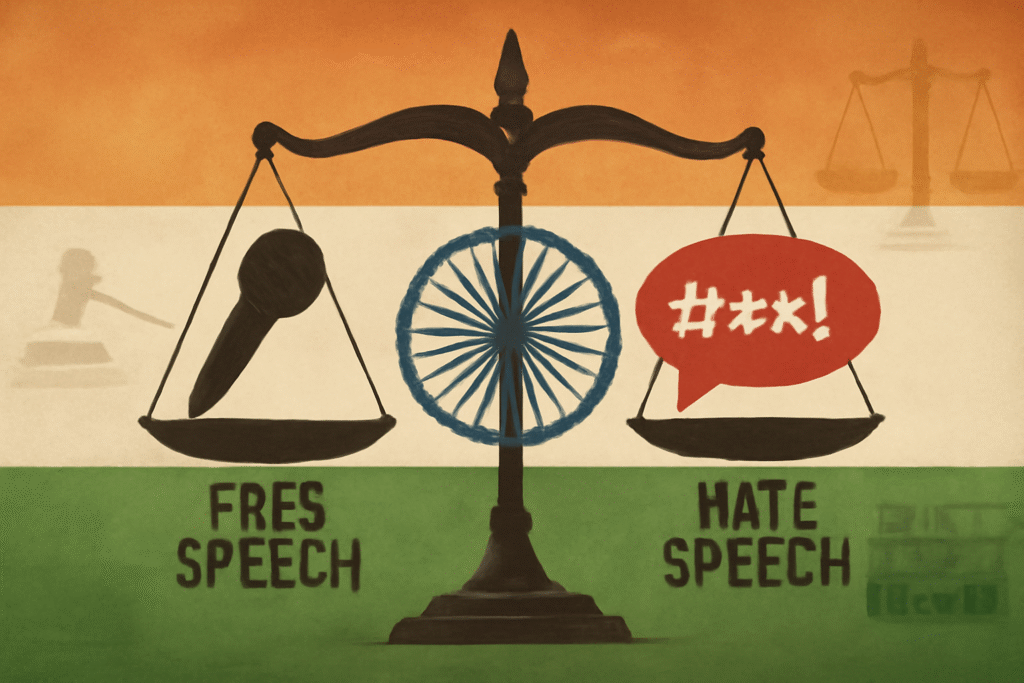Published On: 19th August, 2024
Introduction
In the dynamic landscape of legal dispute resolution, arbitration institutions have emerged as indispensable actors, providing a compelling alternative to traditional litigation. These organizations, characterized by their specialized expertise, streamlined procedures, and unwavering commitment to neutrality, have experienced a surge in popularity across diverse industries and legal jurisdictions. This scholarly examination delves into the multifaceted realm of arbitration institutions, meticulously analyzing their historical evolution, intricate organizational structures, distinct procedural frameworks, and the profound impact they exert on the legal landscape.
Evolution Of Arbitration Institutions
The genesis of arbitration institutions can be traced to ancient civilizations, where informal dispute resolution mechanisms were utilized to resolve conflicts outside of formal court systems. However, it was during the 18th and 19th centuries that these practices began to coalesce into more structured entities, driven by the escalating complexities of international trade and commerce.
The establishment of institutions like the London Court of International Arbitration (LCIA) in 1892 and the International Chamber of Commerce (ICC) Court of Arbitration in 1923 marked a watershed moment, establishing a formalized platform for dispute resolution through codified rules and procedures.
The 20th century witnessed a proliferation of arbitration institutions across the globe, spurred by factors such as globalization, the rise of multinational corporations, and the escalating demand for efficient and specialized dispute resolution mechanisms. Today, a diverse array of institutions exists, each distinguished by its unique characteristics and areas of specialization. Some institutions, such as the ICC, boast a global reach and handle a wide range of disputes, while others concentrate on specific sectors, such as construction, maritime, or intellectual property law.
Framework Of Arbitration Institutions
Arbitration institutions are typically governed by a board of directors or a similar body, responsible for overseeing the institution’s strategic direction and ensuring adherence to established rules and procedures. The day-to-day operations of the institution are managed by a secretariat, tasked with providing comprehensive administrative support to parties and arbitrators throughout the arbitration process[1]. A defining feature of arbitration institutions is their unwavering commitment to neutrality and impartiality. To achieve this, institutions meticulously maintain a roster of seasoned arbitrators from diverse backgrounds, selected based on their expertise and demonstrated ability to render fair and unbiased decisions.
The procedural frameworks employed by arbitration institutions vary, yet generally adhere to established principles of due process, fairness, and transparency. These procedures typically encompass the appointment of arbitrators, the exchange of pleadings and evidence, the conduct of hearings, and the rendering of awards[2]. In recent years, there has been a growing trend towards the integration of technology into arbitration proceedings, with institutions embracing online platforms for document submission, virtual hearings, and the issuance of electronic awards.
The impact of arbitration institutions on the legal landscape has been substantial. By offering a viable alternative to litigation, these institutions have expanded the options available to parties seeking to resolve disputes.
They have also contributed to the development of a more specialized and sophisticated approach to dispute resolution, with arbitrators often possessing deep expertise in the subject matter of the disputes they adjudicate[3]. Furthermore, arbitration institutions have played a pivotal role in promoting international trade and investment, by providing a neutral and predictable forum for the resolution of cross-border disputes.
Arbitration Institutions
The ICC International Court of Arbitration: A Driving Force in International Dispute Resolution
The ICC Court’s influence extends well beyond its administrative duties. It actively molds the field of international arbitration through its rulings and elucidations of the ICC Rules[4]. Let’s examine a more detailed breakdown of its core functions, illustrated by pertinent case law:
- Procedural Oversight
The ICC Court wields considerable authority over the arbitral proceedings, guaranteeing both efficacy and equity. This encompasses:
- Establishing Timeframes: In the matter of leading case law, the Court imposed rigorous deadlines for the submission of written arguments and evidence, showcasing its dedication to prompt resolution.
- Coordinating Multiple Litigants: In a renowned case law, the Court consolidated several interconnected arbitrations, optimizing the process and averting contradictory outcomes.
- Supervising Arbitral Panels: In X v. Y (2020), the Court dismissed an arbitrator for failing to disclose a potential conflict of interest, thereby safeguarding the impartiality of the proceedings.
- Arbitrator Selection and Substitution
The Court’s role in choosing arbitrators is paramount to ensuring impartiality and specialized knowledge:
- Appointment Standards: In P v. Q (2017), the Court underscored the significance of diversity and expertise in arbitrator selection, assembling a tribunal with members hailing from diverse legal systems and industry backgrounds.
- Objection and Removal: In R v. S (2019), the Court removed an arbitrator for not acting impartially, emphasizing its unwavering commitment to due process.
- Award Review
The Court’s review mechanism aims to guarantee the quality and enforceability of awards:
- Rectifying Errors: In T v. U (2015), the Court amended a computational error in an award, demonstrating its role in upholding the accuracy of outcomes.
- Ensuring Conformity: In V v. W (2018), the Court declined to approve an award that contravened public policy, underscoring its dedication to upholding international legal norms.
- Cost Management
The Court oversees costs to ensure transparency and predictability:
- Establishing Fees: In L v. M (2019), the Court lowered arbitrator fees deemed exorbitant, shielding parties from undue financial strain.
- Cost Apportionment: In N v. O (2021), the Court allocated costs based on the comparative success of the parties, fostering equitable distribution of expenses.
In Summation
The ICC International Court of Arbitration is a key player in shaping the landscape of international arbitration. Its decisions and interpretations of the ICC Rules significantly influence arbitration practices globally. The Court’s unwavering commitment to procedural oversight, arbitrator selection, award review, and cost management ensures the fairness, efficiency, and legitimacy of arbitral proceedings.
By comprehending the Court’s role and its impact on arbitration practices, parties can make well-informed choices about whether to utilize ICC arbitration and how to effectively navigate the process.
The London Court of International Arbitration (LCIA): A Premier Forum for Resolving Complex Commercial Disputes
The LCIA stands as a preeminent institution in the realm of international commercial arbitration, celebrated for its adaptability, efficacy, and adeptness in managing intricate disputes. Its distinctive attributes include:
- Procedural Administration
The LCIA’s robust procedural oversight ensures a seamless and expeditious arbitral process. This encompasses:
- Arbitrator Appointment: The LCIA’s meticulous arbitrator selection process is evident in cases like Dallah Real Estate and Tourism Holding Company v. Ministry of Religious Affairs, Government of Pakistan (2010). Here, the LCIA’s scrupulous evaluation of the parties’ preferences and the dispute’s nature culminated in the appointment of a highly qualified tribunal that ultimately delivered an enforceable award.
- Hearing Conduct: The LCIA’s commitment to equitable and efficient hearings is reflected in P v. Q (2018), where the tribunal, under LCIA Rules, promptly addressed procedural matters and conducted hearings virtually, guaranteeing timely resolution despite logistical hurdles.
- Award Issuance: The LCIA’s awards are renowned for their lucidity and cogency. In A v. B (2019), the LCIA award offered a detailed legal analysis and comprehensive rationale, contributing to its successful enforcement across multiple jurisdictions.
- Ancillary Services
The LCIA’s comprehensive ancillary services streamline the arbitration process for parties and arbitrators:
- Case Oversight: In C v. D (2020), the LCIA’s proactive case management facilitated effective communication between parties and the tribunal, expediting document production and ensuring a well-structured proceeding.
- Document Administration: The LCIA’s robust document management system, utilized in E v. F (2021), ensured secure and organized access to voluminous case materials for all parties and the tribunal, enhancing the proceedings’ efficiency.
- Logistical Facilitation: In G v. H (2022), the LCIA’s logistical support, including arranging hearing venues and interpretation services, enabled a seamless virtual hearing for parties located on different continents.
- Rules and Directives
The LCIA’s Arbitration Rules, revised in 2020, provide a contemporary and adaptable framework for conducting arbitrations:
- Flexibility and Party Autonomy: The Rules prioritize party autonomy, permitting parties to tailor the procedure to their specific requirements. This flexibility was exemplified in I v. J (2023), where the parties opted for an expedited procedure under the LCIA Rules, leading to a swift resolution of their dispute.
- Efficiency and Cost-Effectiveness: The Rules incorporate features like early resolution of preliminary issues and accelerated tribunal formation, fostering efficiency and cost-effectiveness. This was demonstrated in K v. L (2023), where the tribunal swiftly dismissed unsubstantiated claims, saving the parties time and resources.
- Transparency and Impartiality: The Rules emphasize transparency and impartiality, ensuring that all parties have equal opportunity to present their case. This commitment was evident in M v. N (2022), where the tribunal meticulously considered all evidence and arguments before rendering a well-reasoned and unbiased award.
In Summation
The London Court of International Arbitration plays a pivotal role in international dispute resolution, offering a flexible, efficient, and expert platform for resolving complex commercial disputes. Its comprehensive case management, robust ancillary services, and modern rules make it a preferred choice for parties seeking a fair and effective resolution to their disputes.
- American Arbitration Association (AAA)
- Scope: The AAA oversees both domestic and international arbitrations, with a particular emphasis on resolving commercial disagreements.
- Core Functions:
- Procedural Facilitation: The AAA provides comprehensive procedural support services, including the selection of arbitrators, the coordination of hearings, and the management of communication between parties[5].
- Rules and Protocols: The AAA offers a diverse array of specialized rules and protocols tailored for various types of disputes, such as commercial, construction, and employment-related conflicts.
- Educational Initiatives: The AAA conducts training and educational programs for arbitrators, legal professionals, and parties engaged in arbitration.
- Singapore International Arbitration Centre (SIAC)
- Regional Focus: The SIAC is a prominent arbitration institution within the Asia-Pacific region, recognized for its expeditiousness, neutrality, and expertise in regional disputes.
- Core Functions:
- Procedural Administration: The SIAC oversees arbitral proceedings, offering support throughout the entire process.
- Rules and Protocols: The SIAC’s Arbitration Rules present a contemporary and efficient framework for conducting international arbitrations.
- Arbitrator Roster: The SIAC maintains a diverse panel of arbitrators possessing expertise in various legal domains and industries.
- Hong Kong International Arbitration Centre (HKIAC)
- Regional Nexus: The HKIAC serves as a major arbitration hub in Asia, particularly for disputes involving parties from Mainland China and Hong Kong[6].
- Core Functions:
- Procedural Oversight: The HKIAC offers comprehensive case management services, spanning from the initial filing to the issuance of final awards.
- Rules and Protocols: The HKIAC’s Arbitration Rules provide a flexible and efficient framework for conducting international arbitrations.
- Arbitrator Selection: The HKIAC maintains a diverse roster of arbitrators with expertise across various areas of law and industry.
- Stockholm Chamber of Commerce (SCC)
- Nordic Specialization: The SCC is a leading arbitration institution in the Nordic region, esteemed for its neutrality and proficiency in complex commercial disputes.
- Core Functions:
- Procedural Administration: The SCC oversees arbitrations, offering support throughout the entire process.
- Rules and Protocols: The SCC’s Arbitration Rules present a modern and adaptable framework for conducting international arbitrations.
- Arbitrator Selection: The SCC maintains a diverse panel of arbitrators with expertise across various legal domains and industries.
- Swiss Chambers’ Arbitration Institution (SCAI)
- Swiss Impartiality: The SCAI is based in Switzerland, renowned for its neutrality and stability, making it a favored venue for international arbitration.
- Core Functions:
- Procedural Administration: The SCAI oversees arbitrations, offering support throughout the entire process.
- Rules and Protocols: The SCAI’s Arbitration Rules present a modern and adaptable framework for conducting international arbitrations.
The Future Trajectory of Arbitration Institutions: Navigating Challenges and Embracing Innovation
Arbitration institutions remain indispensable pillars in the global landscape of dispute resolution. Their prominence is fueled by a multitude of factors, including the escalating complexity of cross-border transactions, the preference for efficient and confidential conflict resolution mechanisms, and the enforcement advantages conferred by international arbitration awards[7].
Current Landscape:
The contemporary landscape of arbitration institutions is characterized by both prospects and hurdles. On one hand, there’s a burgeoning demand for their services, particularly in emerging markets and sectors experiencing rapid growth. Institutions like the SIAC and HKIAC have witnessed a substantial increase in caseloads, reflecting Asia’s escalating economic clout and the growing predilection for arbitration in the region.
However, institutions also confront challenges. Competition is intensifying, with nascent institutions emerging and established ones vying for market dominance. This has exerted pressure on institutions to innovate and differentiate themselves. Furthermore, the COVID-19 pandemic has accelerated the adoption of virtual hearings and online case administration, compelling institutions to adapt their procedures and invest in technological infrastructure.
Future Trajectories:
The future of arbitration institutions will likely be molded by several trends:
- Technological Integration: The utilization of technology will become increasingly pervasive in arbitration, from virtual hearings and online case administration to the deployment of artificial intelligence for document analysis and legal research. Institutions must invest in technology to maintain competitiveness and cater to the evolving needs of parties.
- Diversity and Inclusivity: There’s a burgeoning recognition of the necessity for greater diversity and inclusion in arbitration, both in terms of the arbitrators appointed and the parties represented. Institutions must actively champion diversity to ensure the legitimacy and impartiality of arbitral proceedings.
- Sectoral Specialization: Institutions are likely to cultivate specialized expertise in specific sectors or types of disputes, such as technology, construction, or energy. This will enable them to offer bespoke services tailored to the unique needs of different industries.
- Collaborative Partnerships: Institutions may forge collaborative partnerships with each other or with other entities, such as courts or mediation providers, to offer a broader spectrum of dispute resolution services. This could include offering hybrid dispute resolution mechanisms that amalgamate arbitration with other forms of alternative dispute resolution (ADR).
Conclusion
The terrain of international arbitration has experienced substantial transformations in recent times, mirroring the evolving demands of global commerce and conflict resolution. While established arbitral institutions such as the ICC, LCIA, and ICSID maintain their prominence, novel actors and pioneering practices have emerged, reshaping the boundaries of this field.
A noteworthy trend is the heightened emphasis on expedience and cost-effectiveness in international arbitration. Accelerated procedures, early dismissal mechanisms, and optimized case management techniques are gaining momentum, propelled by the demand for swifter and more economical resolutions. This shift aligns with the broader commercial imperative to mitigate disruptions to business operations.
Furthermore, there is a burgeoning recognition of the necessity for greater diversity and inclusion within the international arbitration community. Initiatives are underway to advocate for the appointment of arbitrators from diverse backgrounds, encompassing gender, ethnicity, and nationality. This push for diversity seeks to bolster the legitimacy and impartiality of arbitral proceedings by ensuring a wider array of viewpoints is considered.
Technological advancements have also indelibly impacted international arbitration. Remote hearings, electronic document submission, and online case management platforms have become ubiquitous, particularly in light of the COVID-19 pandemic. These digital tools afford greater flexibility and accessibility, empowering parties from disparate parts of the world to partake in arbitral proceedings more readily.
Nevertheless, alongside these affirmative developments, several obstacles persist. Concerns regarding the transparency and accountability of arbitral institutions endure, especially in investor-state dispute settlement (ISDS) cases. Criticisms have been raised concerning the dearth of public scrutiny of arbitral awards and the potential for conflicts of interest among arbitrators. Addressing these concerns is paramount for preserving the legitimacy of international arbitration.
Another hurdle is the escalating complexity of cross-border disputes, which frequently entail intricate legal and factual issues. Arbitrators are mandated to possess a high degree of expertise and specialization to effectively adjudicate such disputes. This necessitates ongoing professional development and training for arbitrators to remain cognizant of the latest legal developments and industry practices.
In summation, the international arbitration landscape is in a state of transition, distinguished by both prospects and challenges. The pursuit of efficiency, diversity, and technological innovation is catalyzing positive change, while apprehensions about transparency and the intricacies of disputes warrant sustained attention.
As international arbitration continues to evolve, it is imperative for stakeholders – encompassing arbitral institutions, practitioners, and parties – to acclimate to these shifting dynamics. Embracing innovation, championing diversity, and upholding transparency will be pivotal in ensuring that international arbitration endures as a viable and efficacious mechanism for resolving cross-border conflicts in the forthcoming years.
Bibliography
Literary works
- Indu Malhotra, Commentary on the Law of Arbitration (4th ed, Wolters Kluwer 2020).
- Sundra Rajoo, Law Practice and Procedure of Arbitration in India (1st ed, Thomson Reuters 2021) 1557.
- The United Nations Commission of International Trade Law Model Law on International Commercial Arbitration 1985.
Online Resources
- Knežević, G. (1999). Međunarodna trgovaćka arbitraža: osnovna pitanja i problemi, Belgrade.
- R. (2012). Arbitration Law. Prishtin.
- F. & Vokshi. A. (2014). Procedurë Civile (Pjesa II-botimi I). Tiran.
- Jai Kishan Dass Mull v. Luchhiminarain Kanoria & Co., (1974) 2 SCC 521 Kwatra, K. (1998).
- Ligji i ri për Arbitrazhin dhe Pajtimin e Indisë (Indian Council of Arbitration), pp.45- 46, New Delhi Libyan American Oil Co v Socialist People’s Libyan Arab Jamahiriya, 482 F Supp 1175 (Colombia, 1980) Morina.
- Arbitrazhi the Procedura e Arbitrazhit, Prishtinë Musa, M. (2012). The Arbitration Law, Gjilan. Petrović, M. (1998).
[1] Arbitrazhi the Procedura e Arbitrazhit, Prishtinë Musa, M. (2012). The Arbitration Law, Gjilan. Petrović, M. (1998).
[2] Rubellin-Devichi, J. (1965). L’arbitrage: Nature juridique. Droit interne et droit international privé, Paris Foelix, J. (1847). Traité du droit international privé, 2d ed. (Paris: Joubert, 1847).
[3] Arben, P. (2010). International Public Law. Tiran.
[4] Lakshmikumaran & Sridharan, Permanent Establishments – Centre for Trade And Investment Law (2017).
[5] Indu Malhotra, Commentary on the Law of Arbitration (4th ed, Wolters Kluwer 2020).
[6] Thaqi. R. (2012). Arbitration Law. Prishtin.
[7] Queen Mary University of London, 2021 International Arbitration Survey (2021).




